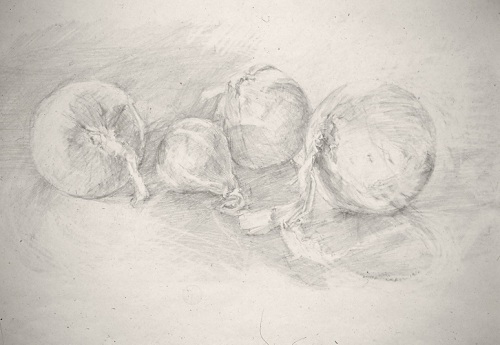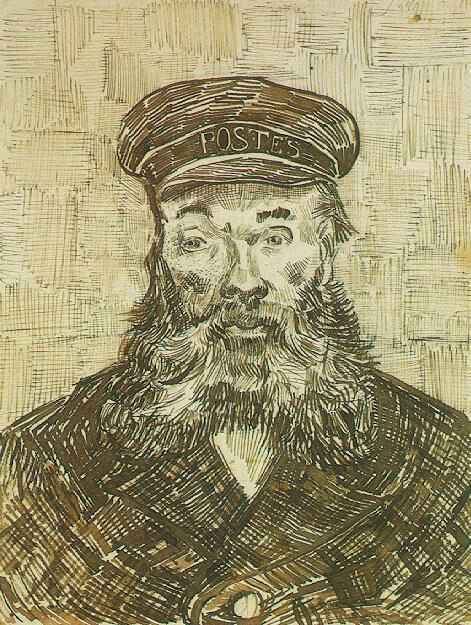Modeling is a term that drawing borrows from sculpture to signify any graphic strategy that develops the appearance of the third dimension. Varying line width and weight, exploring tonal contrasts, cast shadows, linear cross-sections, and atmospheric perspective are some of the ways that the draftsman responds to the visual phenomena of the three-dimensional world. Building on the investigations of line in the early weeks of the semester, we move on to a juncture where the boundary between this most abstract of elements begins to blur into another element – value, or tone – in all of its orchestral richness. The drawings shown here all employ line in ways that express the third dimension through the development of tonality. Unlike media such as charcoal that can be smeared and diffused over the drawing page to create a continuous tone, the insistence of the linear mark in line modeling lends a directional force, a texture, and a certain degree of abstraction and transformation to the drawings. m
Staunton, VA artist, Virginia Deane, employs the sharpened pencil in this drawing as if it were a pen & ink drawing, laying down distinct linear hatch marks to define tonal changes across the globular forms of the onions. Countering the dark lines are white hatchings created by the eraser. The composition builds on the repeated circle of the onions while exploring the subtle variation of the central axis of each, as well as scale contrasts between the different forms, the irregularities of their stems, and the play of cast shadows defining the ground plane.
Michelangelo uses contour hatch-modeling to emphasize the tactile three-dimensional volumes of the figure. The curved lines reveal the surface terrain like the cross-sections of a contour map, or like the toothed tracks left in stone by the sculptor’s chisel. Gradients of dark to light appear in the drawing but they ultimately serve tactile, not optical ends. Transient effects of light and shadow are subordinated to the sense of touch and what it confirms about the volumetric solidity of the form.
Giacometti’s drawing uses line like the wire armature of his sculptures to build the forms from inside to outside. Within the urgent, fast-moving linear vortices of the drawings, traces of the artist’s astute analysis of positions, angles, and axes of major and minor forms can be seen.
m
In this drypoint print, Jake Muirhead, like Giacometti, draws with a vigorous searching line but pushes the contrasts of line weight by varying the pressure of the hand. The direction of the lines mimics the natural striations of the corn leaves, building a powerful three-dimensional expression through contrasts of dark to light.
m
In this walnut ink drawing by Vincent Van Gogh large, coarse lines and intervals at the bottom of the page yield gradually to finer marks and stipples at the top, combining with scale changes, overlaps, and perspectival angles in the fields to set up a simple, yet powerful, spatial movement from foreground to background.
m
Both Kathe Kollwitz, above, and Rembrandt, below, use contour hatching in these self-portraits to explore both tactile, planar surfaces and optical effects of directed light and cast shadow. Rembrandt, by observing the loss of tonal contrast in places such as the eyes and the pursed lips, and the reflected light on the neck and jaw, conveys a powerful sense of luminosity.
m
Giorgio Morandi develops a rich tonal scale by a methodical layering of regularly spaced straight lines of unchanging width.
Reduced to just an outline, the element of line reinforces the essential flatness of the drawing page. When outline yields to and admits the phenomenon of form overlapping form, the modeling of the third dimension begins. An extensive spatial vocabulary exists using nothing more than this simple element.
m
Vincent Van Gogh
m
Aubrey Beardsley
m
Michelangelo Buonarotti
m
Kathe Kollwitz
m
William Utermohlen
m
Peter Paul Rubens
m
Willem Drost
m
Willem Van Der Hoed
m
Guercino
m
m


















